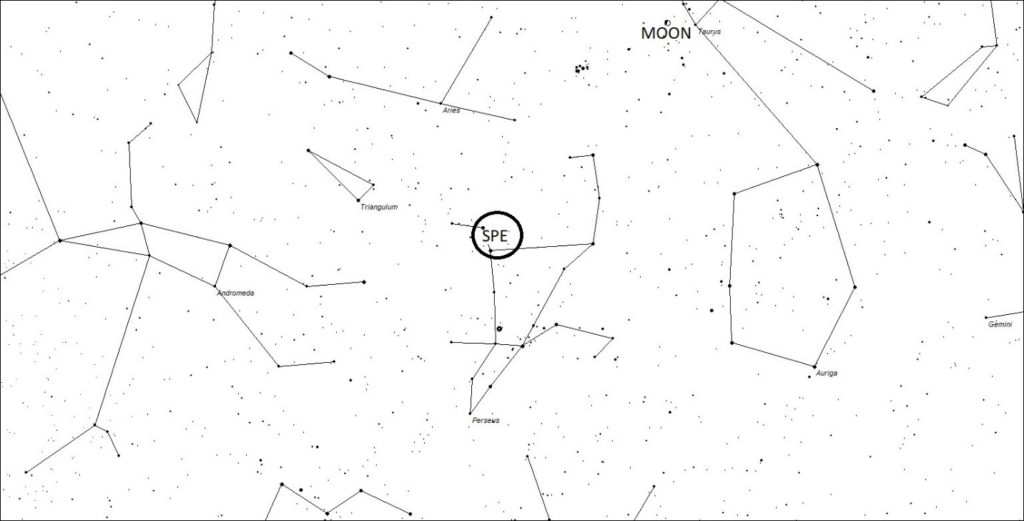Normally, the September epsilon Perseids (SPE) produce a peak of around 5 meteors per hour at maximum. This year, with a 60 percent illuminated moon rising near 22:30 local summer time, one could easily dismiss the probably of seeing anything extraordinary from this source. Yet interplanetary dust expert Jérémie Vaubaillon has brought to our attention that the Earth may pass through debris streams that were produced by an unknown source in 1375 and 1848. The timing of these passages occurs on September 9 near 9:55 universal time (4:55am CDT) for the 1848 stream and 13:32 universal time (11:55pm HST on Sept. 8) for the 1375 stream. These times favor North America for the first encounter and the eastern Pacific area for the second encounter as it will be daylight across the European continent. The density of these streams is unknown so predictions of meteor activity can only be a guess. The best advice is to expect nothing at all and hope for the best!

On the night of maximum activity, the radiant for the September epsilon Perseids lies at 03:12 (048) +40. This position is easy to locate in the sky as it lies only one degree southeast of the bright variable star known as Algol (beta Persei). Unfortunately, the bright half-moon will lie in the neighboring constellation of Taurus, not far from the SPE radiant. The best strategy would be to keep the moon out of your field of view yet still trying to include Algol to help determine the shower association of any meteors seen. Trying to view activity prior to moon rise would most likely yield little success as the radiant only achieves an altitude of 30 degrees 45 minutes after moon rise.
If your skies are clear and transparent on the night of September 8/9, we highly recommend that you try to verify any activity rom this source. The International Meteor Organization has a visual form available to members on their website. If not a member, we encourage you to join us at: https://www.imo.net/members/imo_registration/register/ Your observations will help us advance our knowledge of these obscure meteor showers!




 You saw something bright and fast? Like a huge shooting star? Report it: it may be a fireball.
You saw something bright and fast? Like a huge shooting star? Report it: it may be a fireball.  You counted meteors last night? Share your results with us!
You counted meteors last night? Share your results with us!  You took a photo of a meteor or fireball? You have a screenshot of your cam? Share it with us!
You took a photo of a meteor or fireball? You have a screenshot of your cam? Share it with us!  You caught a meteor or fireball on video? Share your video with us!
You caught a meteor or fireball on video? Share your video with us!